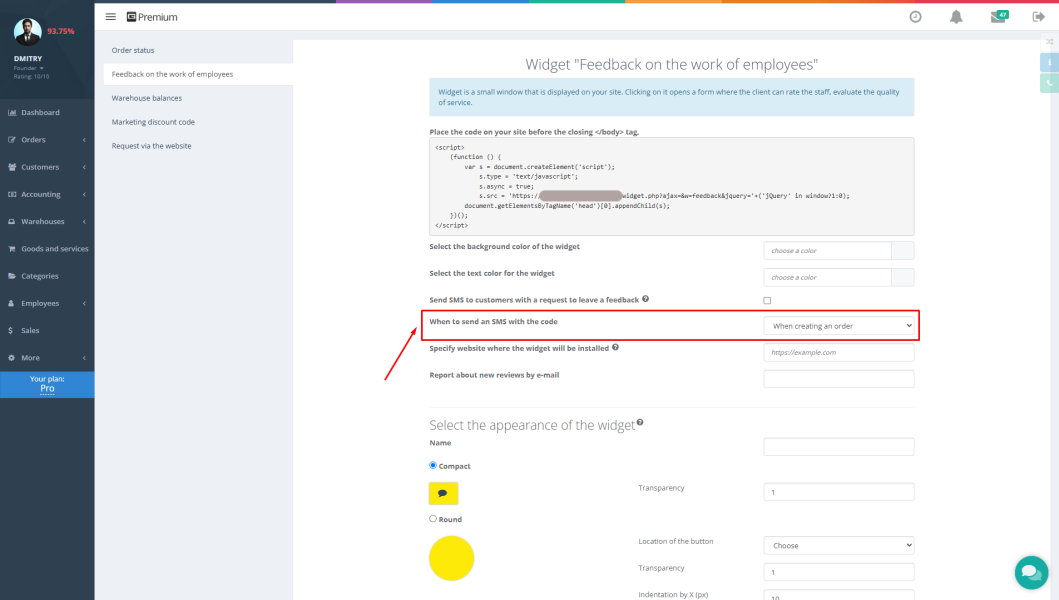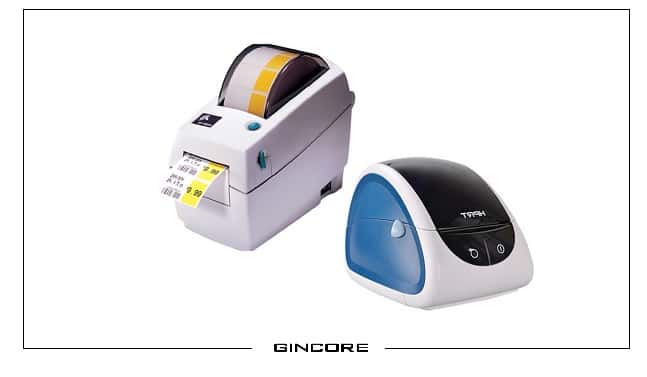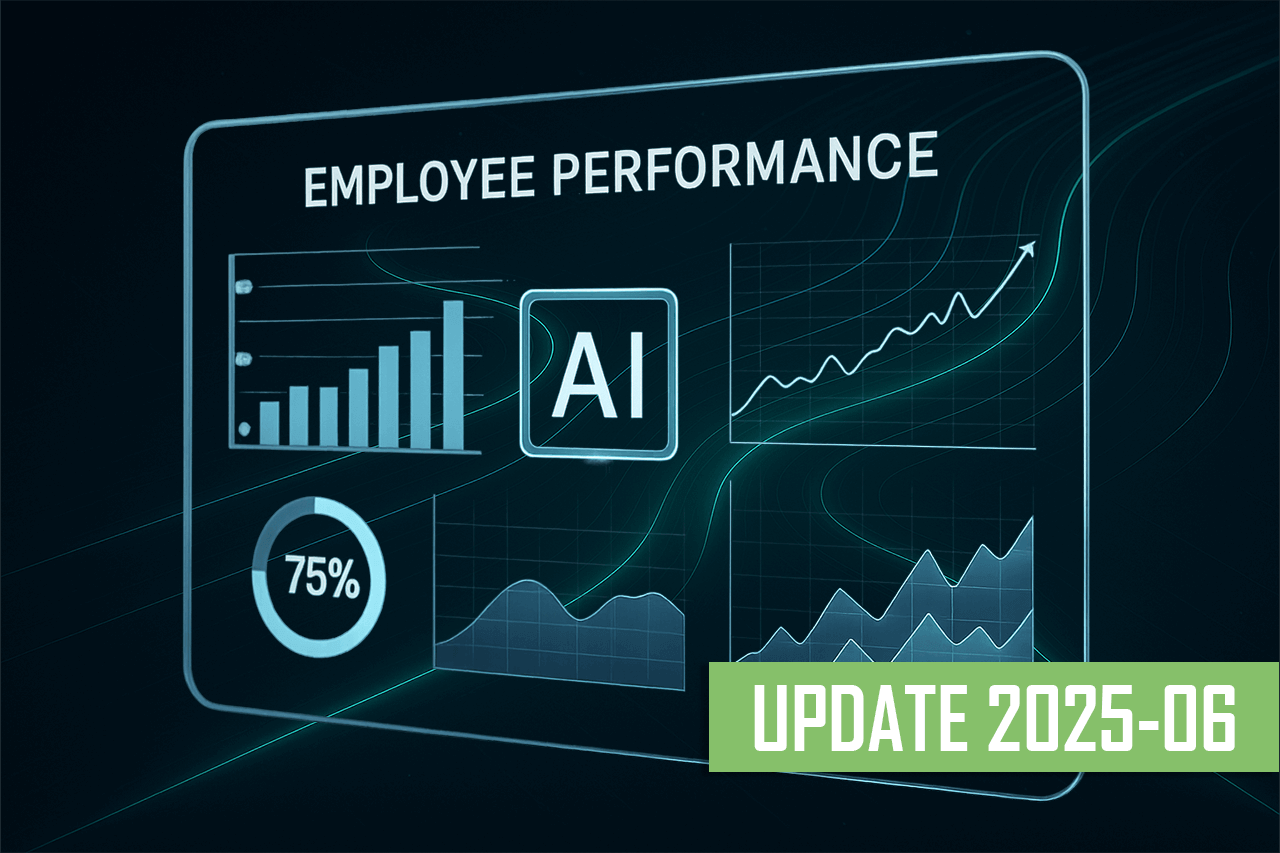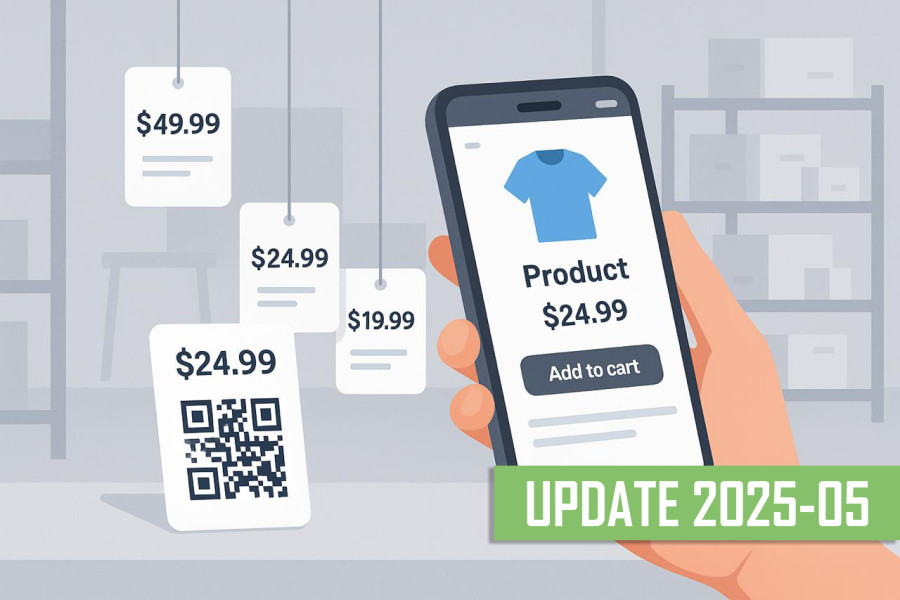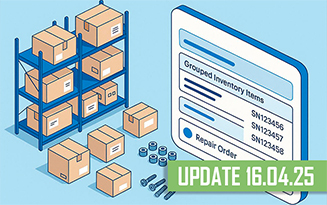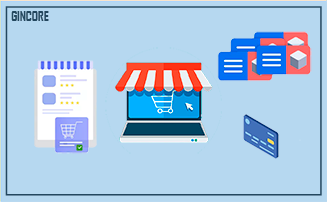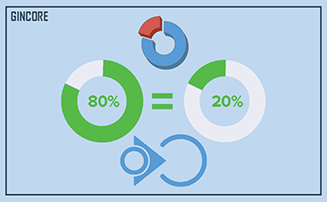In der modernen Welt, in der die Märkte mit Angeboten überhäuft sind und der Wettbewerb ständig wächst, wird die Kundenloyalität zu einem entscheidenden Erfolgsfaktor für Unternehmen. Loyale Kunden sind nicht nur eine Quelle für konstante Einnahmen, sondern auch die Grundlage für nachhaltiges Wachstum und Entwicklung eines Unternehmens. Sie tendieren dazu, mehr auszugeben und sich häufiger an Dienstleistungen oder Produkte zu wenden, denen sie vertrauen, und fungieren auch als inoffizielle Markenbotschafter, indem sie positive Bewertungen und Empfehlungen verbreiten.
Die Statistiken sprechen für sich: Ein Anstieg der Kundenbindungsrate um nur 5 % kann zu einer Erhöhung des Unternehmensgewinns von 25 % bis 95 % führen. Darüber hinaus ist die Akquise neuer Kunden im Durchschnitt fünfmal teurer als die Bindung bestehender Kunden. Dies unterstreicht die Bedeutung der Entwicklung und Implementierung effektiver Treueprogramme, die darauf abzielen, die Beziehungen zu Kunden zu stärken und ihre fortlaufende Interaktion mit der Marke zu fördern.
In diesem Artikel werden wir die wesentlichen Aspekte der Erstellung und Verwaltung von Treueprogrammen untersuchen, verschiedene Typen und deren Implementierungsmethoden diskutieren sowie erfolgreiche Praktiken und innovative Ansätze, die von führenden Unternehmen, einschließlich Gincore, genutzt werden, analysieren. Unser Ziel ist es, den Lesern ein tiefes Verständnis dafür zu vermitteln, wie man ein Treueprogramm entwickelt und optimiert, das den Bedürfnissen ihres Unternehmens entspricht und dessen langfristigen Erfolg unterstützt.
Die Akquisition eines neuen Kunden kann 5-25 Mal teurer sein als die Bindung eines bestehenden.
1. Typen von Treueprogrammen: Wie man das passende für Ihr Unternehmen auswählt
Überblick über verschiedene Arten von Treueprogrammen
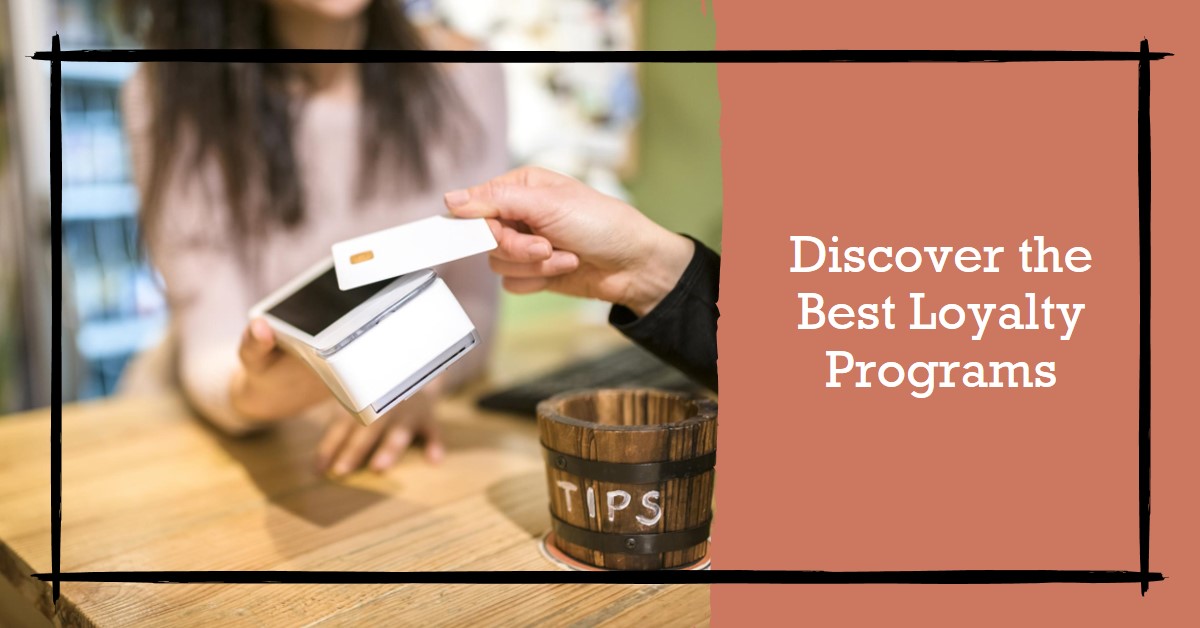
Treueprogramme sind ein leistungsstarkes Werkzeug zur Stärkung der Kundenbeziehungen und zur Steigerung ihrer Bindung. Lassen Sie uns die Haupttypen betrachten:
1. Bonusprogramme: Diese Programme ermöglichen es Kunden, Punkte für Einkäufe zu sammeln, die dann gegen Rabatte, Geschenke oder andere Vorteile eingelöst werden können. Dies ist ein klassischer und weit verbreiteter Ansatz, der wiederholte Käufe fördert.
2. Rabattprogramme: Bieten Kunden Rabatte auf zukünftige Käufe. Einfach zu verstehen und beliebt bei den Verbrauchern, sind solche Programme besonders effektiv in stark umkämpften Segmenten.
Loyale Kunden geben in der Regel 67 % mehr aus als neue Kunden.
3. VIP-Angebote: Exklusive Programme für die wertvollsten Kunden, die besondere Vorteile bieten, wie spezielle Rabatte, persönlichen Service oder Zugang zu limitierten Produkten. Diese fördern ein Gefühl von Exklusivität und Prestige.
4. Partnerschaftsprogramme: Basieren auf der Zusammenarbeit mit anderen Unternehmen, um ein breites Spektrum an Vorteilen anzubieten. Dies kann den Austausch von Punkten oder Rabatten bei Partnern umfassen, was den Kunden zusätzliche Möglichkeiten eröffnet.
5. Eventprogramme: Konzentrieren sich darauf, in bestimmten Momenten Vorteile zu bieten, zum Beispiel an Geburtstagen der Kunden oder zum Jahrestag ihres ersten Kaufs. Dies trägt zur emotionalen Bindung zu den Kunden bei.
Empfehlungen zur Auswahl des passenden Programms für Unternehmen, die Reparatur- und Technikverkaufsdienste anbieten
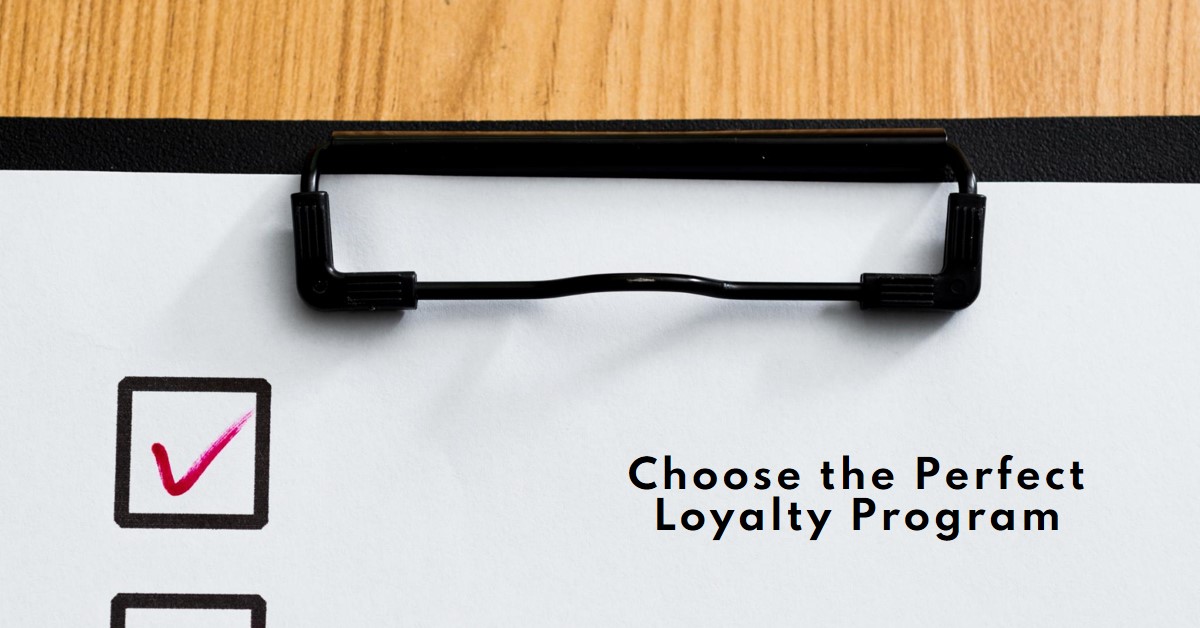
Bei der Auswahl eines Treueprogramms für Unternehmen, die sich auf die Reparatur von Mobiltelefonen, Laptops sowie den Verkauf von Technik und Zubehör spezialisiert haben, sind folgende Aspekte zu berücksichtigen:
1. Orientierung an wiederholten Dienstleistungen: Da Reparaturdienstleistungen häufig wiederholte Besuche erfordern, sollte das Treueprogramm die Kunden dazu motivieren, zurückzukehren. Beispielsweise können Bonusprogramme eingerichtet werden, bei denen jede Reparatur Punkte hinzufügt, die gegen Rabatte auf die nächste Reparatur oder den Kauf von Zubehör eingelöst werden können.
2. Rabatte auf ergänzende Produkte und Dienstleistungen: Bieten Sie Rabatte auf Zubehörteile oder Zusatzleistungen an, wie die Installation eines Schutzglases, beim Kauf oder der Reparatur von Geräten. Dies kann zu zusätzlichen Verkäufen anregen.
3. Exklusive Angebote für Stammkunden: VIP-Angebote für Kunden, die häufig Reparaturen oder Käufe tätigen, können kostenlose Diagnoseleistungen, spezielle Rabatte oder Zugang zu limitierten Waren umfassen.
4. Partnerschaftsprogramme: Eine Zusammenarbeit mit Geräteherstellern oder Zubehörlieferanten kann den Kunden einzigartige Rabatte oder Aktionen auf die Produkte der Partner anbieten, wodurch die gegenseitigen Beziehungen gestärkt werden.
5. Eventprogramme zur Steigerung der Bindung: Nutzen Sie besondere Daten, wie den Jahrestag des ersten Kaufs oder der Reparatur, um personalisierte Rabatte oder besondere Angebote zu unterbreiten, die die emotionale Bindung zu den Kunden stärken.
Zufriedene Kunden neigen dazu, ihre positiven Erfahrungen im Durchschnitt mit 9 anderen Personen zu teilen.
Bei der Auswahl eines Treueprogramms sollten Unternehmen im Bereich Reparatur und Verkauf von Technik bestrebt sein, langfristige Beziehungen zu ihren Kunden aufzubauen, indem sie ihnen Wert nicht nur durch Rabatte, sondern auch durch hochwertigen Service und einen personalisierten Ansatz bieten. Dies hilft nicht nur, bestehende Kunden zu halten, sondern auch, neue durch positive Bewertungen und Empfehlungen zu gewinnen.
2. Vorteile und Nachteile von Treueprogrammen: Was man vor der Implementierung wissen sollte

Analyse der Vor- und Nachteile
Treueprogramme spielen eine Schlüsselrolle in der Kundenbindungsstrategie und können den Geschäftserfolg erheblich beeinflussen. Lassen Sie uns ihre wichtigsten Vor- und Nachteile, insbesondere im Kontext des Reparatur- und Verkaufssektors, betrachten.
Laut Epsilon sind 80 % der Verbraucher eher bereit, bei Unternehmen einzukaufen, die personalisierte Erfahrungen bieten.
Vorteile:
- Umsatzsteigerung: Wiederholte Käufe werden durch das Sammeln von Punkten oder den Erhalt von Rabatten gefördert. Im Falle von Reparaturdiensten kann das Angebot von Rabatten auf zukünftige Dienstleistungen oder Zubehörkäufe die Kunden zur Rückkehr motivieren.
- Verbesserung des Markenimages: Hochwertige Treueprogramme schaffen ein positives Image des Unternehmens, fördern die Kundenzufriedenheit und stärken das Vertrauen in die Marke.
- Erfassung wertvoller Kundendaten: Treueprogramme ermöglichen es nicht nur, Kunden für Einkäufe zu belohnen, sondern auch Informationen über deren Präferenzen und Kaufverhalten zu sammeln. Besonders wertvoll ist die Einführung von Chatbots, die Kunden über den Status ihrer Anfragen, Statusänderungen sowie personalisierte Unternehmensnachrichten und Erinnerungen informieren können. Kunden, die den Chatbot abonniert haben, erhalten relevante Informationen zu ihrem Treuepunktestand, Aktionen und Sonderangeboten, was ihre Bindung und Zufriedenheit mit den Dienstleistungen erhöht.
Nachteile:
- Kosten und Komplexität der Verwaltung: Auf den ersten Blick kann die Entwicklung und Aufrechterhaltung eines Treueprogramms kostspielig und komplex erscheinen. moderne Lösungen wie Gincore erleichtern diesen Prozess erheblich. Gincore optimiert ständig seine Funktionen, um den Aufwand für die Verwaltung des Treueprogramms zu minimieren. Dies ermöglicht selbst kleinen Unternehmen, ihre Treueprogramme effektiv umzusetzen und aufrechtzuerhalten, ohne erhebliche Kosten.
- Risko der Gewöhnung der Kunden an ständige Rabatte: Wenn Kunden an ständige Rabatte oder Boni gewöhnt sind, kann dies ihre Wahrnehmung des Wertes von Dienstleistungen ohne Rabatte mindern.
- Potenzielle Unzufriedenheit der Kunden: Schlecht geplante oder schwer verständliche Programme können Frustration bei den Kunden hervorrufen.
Tipps zur Minimierung potenzieller Risiken
Um diese Risiken zu minimieren und die Vorteile zu verstärken, sind folgende Empfehlungen ratsam:
1. Einfachheit und Transparenz: Das Programm sollte für die Kunden leicht verständlich sein. Klare Bedingungen und Vorteile kommunizieren und dabei komplizierte Regeln und Einschränkungen vermeiden.
2. Ausgewogenheit der Angebote: Bestimmen Sie das optimale Verhältnis zwischen Kaufanreiz und Erhaltung der Rentabilität. Beispielsweise Rabatte oder Boni anbieten, die die Margen der Produkte und Dienstleistungen nicht erheblich beeinträchtigen.
3. Personalisierung: Nutzen Sie die gesammelten Daten zur Erstellung personalisierter Angebote, was deren Attraktivität und Effektivität erhöht.
4. Analyse und Anpassung: Analysieren Sie regelmäßig die Effektivität des Programms und nehmen Sie Anpassungen basierend auf gesammelten Daten und Kundenfeedback vor.
5. Integration in Geschäftsprozesse: Es ist wichtig, dass das Treueprogramm harmonisch in die Gesamtgeschäftsstrategie des Unternehmens integriert ist und mit anderen Aspekten wie Marketing, Verkauf, Kundenservice und Bestandsmanagement interagiert. Beispielsweise ermöglicht die Nutzung des Gincore-CRM-Systems mit einem integrierten Treueprogramm die Automatisierung von Prozessen zur Erfassung von Treuepunkten, Verwaltung personalisierter Angebote und Analyse des Kundenverhaltens. Dies sorgt für ein effektiveres und gezielteres Kundeninteraktion, was deren Loyalität und Zufriedenheit mit den Unternehmensdienstleistungen erhöht.
Die Beachtung dieser Empfehlungen wird dazu beitragen, ein effektives Treueprogramm zu schaffen, das sowohl Ihrem Unternehmen als auch Ihren Kunden zugutekommt.
Mehr als 50 % der loyalen Kunden sind bereit, ihr Feedback zu einem Produkt oder einer Dienstleistung mit dem Unternehmen zu teilen.
3. Integration von Treueprogrammen in bestehende Geschäftsprozesse: Praktische Tipps
Methoden zur Integration des Programms in die Unternehmensstruktur
Die Integration eines Treueprogramms in die Geschäftsprozesse erfordert einen durchdachten Ansatz, damit das Programm nicht nur effektiv, sondern auch harmonisch in die gesamte Struktur und Kultur des Unternehmens integriert wird.
1.Bestimmen der wichtigen Kontaktpunkte mit Kunden: Der erste Schritt zur erfolgreichen Integration besteht darin, die wichtigen Kontaktpunkte mit Kunden zu identifizieren, an denen Elemente des Treueprogramms angewendet werden können. Dies können der Kaufzeitpunkt, der Kontakt im Service-Center, Besuche auf der Website oder Interaktionen über soziale Netzwerke sein.
2.Verbindung des Treueprogramms mit den Werten des Unternehmens: Es ist wichtig, dass das Treueprogramm die grundlegenden Werte und die Mission Ihres Unternehmens widerspiegelt und unterstützt. Dies stärkt die Marke und verbessert die Wahrnehmung des Programms bei den Kunden.
3.Schulung des Personals: Das Personal muss über alle Aspekte des Treueprogramms umfassend informiert sein, um die Vorteile und Bedingungen effektiv an die Kunden zu kommunizieren und das Programm richtig im Tagesgeschäft anzuwenden.
Laut Microsoft haben etwa 3 von 5 globalen Verbrauchern aufgrund schlechten Kundenservice die Beziehung zu einer Marke beendet.
Beispiele für den Einsatz von Technologien zur Automatisierung
Technologien spielen eine Schlüsselrolle bei der Integration und Optimierung von Treueprogrammen. Beispiele, wie Technologien helfen können:
1.CRM-Systeme: Die Integration des Treueprogramms in ein CRM-System ermöglicht eine automatische Verfolgung von Kundenkäufen, ihren Vorlieben und ihrer Historie, was zu einer personalisierten Ansprache jedes Kunden beiträgt.
2.Analysetools: Der Einsatz von Analysetools zur Verfolgung der Wirksamkeit des Treueprogramms hilft dabei, Kundenverhaltens- trends zu identifizieren und Angebote zu optimieren und die Gesamtfähigkeit des Programms zu steigern.
3.Automatisierung des Marketings: Automatisierte Marketing-Tools können verwendet werden, um personalisierte Angebote und Nachrichten basierend auf den Verhaltens- und Präferenzdaten der Kunden zu erstellen und zu versenden.
★ Wie Gincore bei der Automatisierung und Optimierung von Treueprogrammen hilft
Gincore bietet eine Reihe von Lösungen zur Erleichterung der Integration und Verwaltung von Treueprogrammen:
1.Integration an den Verkaufsstellen: Gincore ermöglicht die einfache Integration von Treueprogrammen an verschiedenen Verkaufsstellen, einschließlich Online- und Offline-Kanälen, was die automatisierte Erfassung und Verfolgung von Treuepunkten ermöglicht.
2.Verwaltung der Kundenbasis: Das Gincore-System ermöglicht die zentrale Verwaltung der Kundenbasis, einschließlich der Kaufhistorie, Vorlieben und Status im Treueprogramm, was die Personalisierung von Angeboten erleichtert und die Servicequalität verbessert.
3.Analyse und Reporting: Gincore bietet leistungsstarke Analysetools zur Verfolgung der Wirksamkeit des Treueprogramms, die helfen, die erfolgreichsten Aktionen zu identifizieren und die Strategie auf Basis der gewonnenen Daten anzupassen.
Die Integration des Treueprogramms in bestehende Geschäftsprozesse mithilfe von Lösungen wie denen von Gincore ermöglicht die Schaffung eines flexiblen und effektiven Programms, das die Kundenbeziehungen verbessert und deren Loyalität steigert.
4. Messung der Effektivität von Treueprogrammen: Schlüsselkennzahlen und Analytik
Methoden zur Messung des Erfolgs des Programms
Die Messung der Effektivität von Treueprogrammen ist ein Schlüssel- aspekt ihres Managements und ihrer Optimierung. Für die Bewertung des Erfolgs des Programms können folgende Werkzeuge und Methoden verwendet werden:
1.Analyseplattformen: Moderne CRM-Systeme und spezialisierte Analysetools ermöglichen die Erfassung und Analyse von Daten über das Verhalten und die Reaktionen der Kunden auf das Treueprogramm. Diese Werkzeuge bieten tiefgreifende Einblicke und helfen zu bestimmen, welche Aspekte des Programms am effektivsten funktionieren.
2.Kundenumfragen: Regelmäßige Umfragen und Feedback von Kunden können wertvolle Informationen darüber liefern, wie sie das Treueprogramm wahrnehmen und welche Elemente Verbesserungsbedarf haben.
3.Daten-Segmentierung: Die Aufteilung von Daten in verschiedene Kundensegmente (z. B. nach Alter, Geschlecht, Geografie) hilft zu verstehen, wie unterschiedliche Gruppen auf verschiedene Aspekte des Programms reagieren.
4.Testen und Vergleichsanalyse: Der Einsatz von A/B-Testmethoden zum Vergleich verschiedener Elemente des Treueprogramms kann Aufschluss darüber geben, welche Änderungen am effektivsten sind.
Schlüsselkennzahlen (KPIs)
Um zu bewerten, wie erfolgreich das Treueprogramm ist, sollten folgende Schlüsselkennzahlen berücksichtigt werden:
Forrester-Studien zeigen, dass Unternehmen mit starken digitalen Fähigkeiten in ihrem Treueprogramm eine höhere Kundenzufriedenheit verzeichnen.
1.Häufigkeit der Wiederholungskäufe: Dieser KPI zeigt, wie oft Kunden, die am Treueprogramm teilnehmen, zu Wiederholungskäufen zurückkehren. Eine Erhöhung dieses Wertes deutet darauf hin, dass das Programm effektiv dazu anregt, dass Kunden zurückkehren.
2.Durchschnittlicher Warenkorbwert: Misst den durchschnittlichen Betrag, den Kunden bei einer Transaktion ausgeben. Eine Erhöhung des durchschnittlichen Wertes von Teilnehmern des Treueprogramms kann auf eine erfolgreiche Anregung zusätzlicher Verkäufe hindeuten.
3.Kundenzufriedenheitsgrad: Schätzt ein, wie zufrieden Kunden mit ihrer Teilnahme am Treueprogramm sind. Dieser Wert wird häufig durch Umfragen und Feedback ermittelt.
4.Kundenbindung: Der Prozentsatz der Kunden, die über einen bestimmten Zeitraum weiterhin am Treueprogramm teilnehmen. Eine hohe Bindung zeigt, dass das Treueprogramm effektiv ist, um Kunden zu halten.
5.ROI (Return on Investment): Diese Kennzahl hilft, zu verstehen, inwieweit sich Investitionen in das Treueprogramm durch Umsatzsteigerungen, Wiederholungskäufe und Kundenbindung abbezahlen.
Diese KPIs und Analysemethoden ermöglichen es Ihnen, die Effektivität Ihres Treueprogramms zu bewerten und erforderliche Anpassungen zur Verbesserung vorzunehmen, um die Kundenzufriedenheit zu erhöhen und den Gewinn Ihres Unternehmens zu steigern.
5. Ansätze zur Personalisierung von Treueprogrammen: Schaffung eines einzigartigen Kundenerlebnisses
Personalisierung in Treueprogrammen verbessert nicht nur die Kundeninteraktion, sondern verwandelt deren Erfahrung auch in etwas Einzigartiges und Unvergessliches. Hier sind einige Schlüsselstrategien zur Schaffung eines individualisierten Ansatzes:
1.Dynamische Angebote: Erstellen Sie ein System, das automatisch Angebote anpasst, basierend auf dem Verhalten des Kunden. Wenn ein Kunde beispielsweise häufig bestimmte Produktkategorien kauft, generieren Sie automatisch Rabatte für diese Produkte oder bieten Sie exklusive Boni an.
2.Zielgerichtete Benachrichtigungen: Verwenden Sie Daten zu früheren Käufen der Kunden, um personalisierte Benachrichtigungen über neue Produkte, spezielle Aktionen oder Events, die sie interessieren könnten, zu senden.
3.Angebote basierend auf Verhalten: Analysieren Sie das Einkaufsverhalten von Kunden, um spezifische Produkte oder Dienstleistungen anzubieten. Wenn ein Kunde beispielsweise regelmäßig den Bereich Zubehör für Mobiltelefone besucht, bieten Sie ihm einen speziellen Rabatt auf diese Produkte an.
4.Individuelle Rabatte und Boni: Entwickeln Sie ein System von Rabatten und Boni, das die individuellen Vorlieben und Kaufhistorien jedes Kunden berücksichtigt.
5.Feedback sammeln: Bitten Sie Kunden regelmäßig um ihr Feedback zu ihren Präferenzen und Zufriedenheit, und nutzen Sie diese Informationen zur weiteren Personalisierung der Angebote.
Die Anwendung dieser Strategien wird nicht nur die Kundenzufriedenheit steigern, sondern auch deren Loyalität gegenüber Ihrer Marke erheblich festigen, indem sie jede Phase der Interaktion einzigartig und personalisiert macht.
6. Nutzung von Technologien in Treueprogrammen: Automatisierung und Innovationen
Rolle der Technologien in der Verwaltung von Treueprogrammen
Technologien spielen eine Schlüsselrolle bei der Verbesserung des Managements von Treueprogrammen. Sie erleichtern nicht nur den Verwaltungsprozess, sondern steigern auch die Effizienz des Programms durch Automatisierung, Personalisierung und Analytik. So können Technologien Treueprogramme verbessern:
1. Automatisierung von Prozessen: Moderne technische Lösungen ermöglichen die Automatisierung vieler Aspekte von Treueprogrammen, wie das Sammeln von Punkten, die Verwaltung von Aktionen und Rabatten sowie das Versenden personalisierter Nachrichten an Kunden.
2. Personalisierung der Interaktion mit Kunden: Der Einsatz von Machine-Learning-Algorithmen und Künstlicher Intelligenz ermöglicht es, das Verhalten der Kunden zu analysieren und ihnen die am besten passenden Angebote und Boni bereitzustellen.
3. Analytik und Monitoring: Technologien ermöglichen die Erfassung und Analyse großer Datenmengen zu Kundenverhalten und -präferenzen. Dies unterstützt die Bewertung der Effektivität des Programms und dessen Anpassung.
4. Integration mit anderen Systemen: Technologien erleichtern die Integration von Treueprogrammen in andere Systeme, wie CRM, ERP oder Marketingplattformen, und schaffen so einen ganzheitlichen und konsistenten Ansatz.
Beispiele für innovative Lösungen von Gincore
Gincore implementiert aktiv innovative Lösungen in seinen Treueprogrammen und demonstriert, wie Technologien die Kundeninteraktion verstärken können:
Über 57 % der Verbraucher ziehen es vor, mobile Apps für die Teilnahme an Treueprogrammen zu nutzen.
1.Integrierte CRM-Systeme: Gincore nutzt fortschrittliche CRM-Systeme zur Verwaltung der Kundenbasis, um eine personalisierte Interaktion mit den Kunden und ein effektives Management von Treueprogrammen zu gewährleisten.
2.Mobile Apps: Gincore entwickelt mobile Apps für Kunden, die den Zugang zu Treueprogrammen erleichtern, den Komfort erhöhen und die Kundenbindung steigern.
3.Automatisierte Kundenkommunikation: Einführung von Chatbots und automatisierten Kommunikationssystemen, um eine rechtzeitige und effektive Kommunikation mit Kunden zu gewährleisten, einschließlich Benachrichtigungen über neue Aktionen und den Status der gesammelten Boni.
4.Intelligente Datenanalyse: Anwendungen von Machine-Learning-Algorithmen zur Analyse des Kundenverhaltens und zur Erstellung personalisierter Angebote und Aktionen basierend darauf.
Diese innovativen Ansätze von Gincore verbessern nicht nur das Kundenerlebnis, sondern steigern auch die Effektivität von Treueprogrammen und machen sie für die Kunden attraktiver und bequemer.
7. Rechtliche Aspekte und Compliance: Was zu beachten ist
Überblick über rechtliche Überlegungen und Anforderungen
Bei der Entwicklung und Implementierung von Treueprogrammen ist es wichtig, eine Reihe rechtlicher Aspekte zu berücksichtigen, um deren Konformität mit den Gesetzen zu gewährleisten:
1.Datenschutz und Vertraulichkeit: Der wichtigste Aspekt ist die Einhaltung der Datenschutzgesetze. Treueprogramme erfordern häufig die Erfassung und Verarbeitung persönlicher Informationen von Kunden. Daher muss sichergestellt werden, dass diese Prozesse den Gesetzen Ihres Landes entsprechen, beispielsweise der DSGVO in der Europäischen Union oder dem CCPA in Kalifornien, USA.
2.Allgemeine Geschäftsbedingungen des Treueprogramms: Formulieren Sie klar und präzise die Bedingungen für die Teilnahme am Programm, die Regeln für das Sammeln und Verwenden von Boni, die Laufzeiten des Programms und die Bedingungen für Änderungen oder Beendigungen.
3.Werbe- und Marketinggesetze: Stellen Sie sicher, dass das Marketingmaterial und die Werbung für das Treueprogramm den Werbegesetzen entsprechen und keine irreführenden Informationen enthalten.
4.Wettbewerbs- und Antitrustgesetze: Einige Aspekte von Treueprogrammen können als wettbewerbswidrig eingestuft werden, insbesondere wenn sie unfaire Bedingungen für Wettbewerber schaffen oder die Wahlmöglichkeiten für Verbraucher einschränken.
Tipps zur Einhaltung der Gesetzeslage
1.Konsultation mit Juristen: Lassen Sie sich vor der Einführung eines Treueprogramms von Juristen beraten, die auf diese rechtlichen Aspekte spezialisiert sind. Das hilft, mögliche rechtliche Probleme in der Zukunft zu vermeiden.
2.Transparenz und Ehrlichkeit: Seien Sie ehrlich und transparent darüber, wie die Daten der Kunden gesammelt, verwendet und geschützt werden, sowie über alle Bedingungen der Teilnahme am Programm.
3.Regelmäßige Aktualisierung der Datenschutzrichtlinien und Bedingungen: Überprüfen und aktualisieren Sie kontinuierlich Ihre Richtlinien und Bedingungen im Einklang mit Änderungen in den Gesetzen und besten Praktiken.
4.Anpassung an lokale gesetzliche Vorgaben: Wenn Ihr Unternehmen in mehreren Ländern tätig ist, stellen Sie sicher, dass Ihr Programm die gesetzlichen Bestimmungen jedes Landes einhält.
5.Schulung der Mitarbeiter: Es ist wichtig, dass die Mitarbeiter, die mit dem Treueprogramm arbeiten, gut über die rechtlichen Aspekte und entsprechenden Verfahren informiert sind.
Die Beachtung dieser Empfehlungen wird dazu beitragen, dass Ihr Treueprogramm nicht nur effektiv und für Kunden attraktiv ist, sondern auch vollständig konform mit den geltenden Gesetzen bleibt.
8. Beispiele erfolgreicher Treueprogramme: Fallstudien
Die Untersuchung erfolgreicher Treueprogramme kann wertvolle Lektionen und Strategien bieten, die in anderen Geschäften angepasst werden können. Lassen Sie uns einige Fallstudien betrachten:
Fallstudie 1: Starbucks
Beschreibung: Das Treueprogramm Starbucks Rewards ermöglicht es Kunden, Sterne für jeden Einkauf zu sammeln, die dann gegen kostenlose Getränke und Speisen eingelöst werden können.
Schlüsselfaktoren für den Erfolg:
- Mobile App: Die benutzerfreundliche mobile App ermöglicht es Kunden, ihre Sterne leicht zu verfolgen und ihre Belohnungen einzulösen.
- Personalisierung: Angebote und Empfehlungen basierend auf den Vorlieben und der Kaufhistorie des Kunden.
- Exklusiver Zugang: Teilnehmer des Programms erhalten Zugang zu speziellen Aktionen und Angeboten.
Fallstudie 2: Sephora Beauty Insider
Beschreibung: Das Programm Sephora Beauty Insider ermöglicht es Kunden, Punkte für Einkäufe zu sammeln, die gegen Produkte eingelöst oder für den Zugang zu exklusiven Events genutzt werden können.
Schlüsselfaktoren für den Erfolg:
- Flexibilität bei der Verwendung von Punkten: Kunden können Punkte für Produkte oder den Zugang zu einzigartigen Veranstaltungen verwenden.
- Drei Mitgliedsstufen: Unterschiedliche Stufen des Programms bieten einzigartige Vorteile und motivieren Kunden, mehr auszugeben, um einen höheren Status zu erreichen.
- Personalisierte Empfehlungen: Basierend auf der Kaufhistorie macht Sephora personalisierte Produktempfehlungen.
Lektionen und Strategien zur Anpassung
1.Einsatz mobiler Technologien: Mobile Apps erhöhen erheblich die Benutzerfreundlichkeit und Kundenbindung.
2.Personalisierung der Angebote: Angebote, die auf dem Verhalten und den Vorlieben der Kunden basieren, verbessern deren Erfahrung und fördern Wiederholungskäufe.
3.Mehrstufige Programme: Die Entwicklung von Programmen mit mehreren Mitgliedsstufen motiviert Kunden, mehr auszugeben und erhöht deren Loyalität.
4.Flexibilität bei den Belohnungen: Die Bereitstellung unterschiedlicher Möglichkeiten zur Nutzung gesammelter Punkte oder Boni erhöht die Attraktivität des Programms.
5.Exklusivität: Das Angebot von exklusiven Aktionen und Zugang zu besonderen Veranstaltungen kann den Wert des Programms für die Kunden erheblich steigern.
Die Untersuchung dieser Fallstudien zeigt, dass die Kombination von technologischen Innovationen, Personalisierung und Exklusivität Treueprogramme besonders attraktiv und effektiv machen kann.
9. Strategien zur Kundenbindung und -engagement
Kundenbindung und die Steigerung ihrer Engagements sind entscheidende Aspekte eines erfolgreichen Unternehmens. Die Akquisition neuer Kunden ist für Unternehmen deutlich teurer als die Bindung bestehender. Hier sind einige Strategien und Methoden, die dabei helfen können.
Methoden zur Bindung und Steigerung des Kundenengagements
1.Personalisierte Angebote: Verwenden Sie Daten zu Einkäufen und Vorlieben der Kunden zur Erstellung individueller Angebote, die ihren Interessen und Bedürfnissen entsprechen.
2.Treueprogramme: Entwickeln Sie mehrstufige Treueprogramme, die wiederholte Käufe belohnen und die Kundenbindung erhöhen.
3.Regelmäßige Kommunikation mit Kunden: Halten Sie den Kontakt zu den Kunden durch regelmäßige Newsletter, Aktualisierungen in sozialen Medien und persönliche Benachrichtigungen.
4.Hochwertiger Service und Support: Gewährleisten Sie einen hohen Kundenservicestandard in allen Phasen der Interaktion mit Ihrem Unternehmen.
5.Verwendung von Feedback: Sammeln Sie aktiv Kundenfeedback und analysieren Sie dieses zur Verbesserung Ihrer Produkte und Dienstleistungen.
6.Exklusiver Inhalt und Angebote: Erstellen Sie spezielle Angebote oder Inhalte, die nur für treue Kunden zugänglich sind.
7.Event-Marketing: Organisieren Sie Veranstaltungen oder Aktionen, die mit wichtigen Ereignissen oder Feiertagen verbunden sind.
Die Rolle von Kommunikation und Service
Qualitativ hochwertige Kommunikation und Service spielen eine wichtige Rolle bei der Kundenbindung und Steigerung ihrer Loyalität. Hier sind einige Aspekte, auf die es zu achten gilt:
1.Ständige Kommunikation: Informieren Sie Kunden regelmäßig über Neuigkeiten im Unternehmen, spezielle Angebote und nützliche Tipps, um ihr Interesse an der Marke aufrechtzuerhalten.
2.Hochwertiger Kundensupport: Schnelles und effektives Lösen von Kundenproblemen erhöht deren Zufriedenheit und Vertrauen in die Marke.
3.Personalisierte Kommunikation: Sprechen Sie Kunden mit ihrem Namen an und bieten Sie Lösungen, die ihren individuellen Bedürfnissen und Vorlieben entsprechen.
4.Feedback: Binden Sie Kunden aktiv in den Prozess zur Verbesserung von Produkten und Dienstleistungen durch Umfragen und Rückmeldungen ein.
5.Transparenz und Ehrlichkeit: Offene und ehrliche Kommunikation mit Kunden über Änderungen bei Produkten, Dienstleistungen oder Unternehmensrichtlinien.
Laut einer Umfrage von Yotpo sind 37 % der Kunden der Meinung, dass Loyalität bedeutet, über fünf Jahre hinweg Einkäufe bei einem Unternehmen zu tätigen.
Die Umsetzung dieser Strategien hilft nicht nur, bestehende Kunden zu halten, sondern auch, sie zu treuen Unterstützern Ihrer Marke zu machen.
10. Innovationen und kontinuierliche Entwicklung: Stoppen Sie nicht beim Erreichten
Bedeutung der kontinuierlichen Verbesserung und Innovation
In der modernen, dynamischen Geschäftswelt ist es nicht nur wichtig, sondern notwendig, dass Treueprogramme ständig aktualisiert und verbessert werden, um das Interesse und die Zufriedenheit der Kunden zu erhalten. Hier sind einige Gründe, warum dies so wichtig ist:
1.Anpassung an sich ändernde Marktanforderungen: Die Verbraucherpräferenzen und das Verhalten der Kunden ändern sich ständig, und Treueprogramme müssen sich an diese Änderungen anpassen.
2.Nutzung neuer Technologien: Der Fortschritt in der Technologie bietet neue Möglichkeiten zur Verbesserung der Kundeninteraktion und der Effizienz der Programme.
3.Abgrenzung von der Konkurrenz: Ein innovativer Ansatz für das Treueprogramm kann einen Wettbewerbsvorteil darstellen.
4.Steigerung des ROI: Die Verbesserung des Treueprogramms kann die Kundenbindung erhöhen und damit deren Ausgaben steigern.
Beispiele, wie Gincore kontinuierlich seinen Funktionsumfang aktualisiert und verbessert
Gincore ist ein Beispiel für ein Unternehmen, das aktiv Innovationen in seine Treueprogramme integriert:
1.Automatisierung von Prozessen: Gincore arbeitet ständig daran, die Automatisierung der Prozesse innerhalb seiner Treueprogramme zu verbessern, was die Verwaltung für Unternehmen vereinfacht und das Benutzererlebnis für Kunden verbessert.
2.Integration in neue Plattformen: Regelmäßige Aktualisierung der Integrationen in neue soziale Plattformen und Bezahlsysteme erhöht die Erreichbarkeit und Benutzerfreundlichkeit der Programme für Kunden.
3.Entwicklung mobiler Lösungen: Gincore arbeitet aktiv an der Verbesserung mobiler Apps, um den Kunden die Interaktion mit dem Treueprogramm zu erleichtern.
4.Personalisierung und maschinelles Lernen: Anwendung von Algorithmen des maschinellen Lernens zur Analyse des Verhaltens und der Vorlieben von Kunden, um personalisierte Angebote zu erstellen.
5.Ökologische Initiativen: Einführung ökologischer Initiativen im Rahmen des Treueprogramms, die den aktuellen Trends nachhaltiger Entwicklung und sozialer Verantwortung gerecht werden.
Diese Bemühungen um kontinuierliche Aktualisierung und Verbesserung von Treueprogrammen ermöglichen es Gincore, an der Spitze der Innovationen zu bleiben und den Kunden relevante, effektive und attraktive Lösungen anzubieten.
Fazit und Empfehlungen für die künftige Entwicklung des Treueprogramms
In diesem Artikel haben wir die wichtigsten Strategien und Methoden untersucht, die notwendig sind, um ein erfolgreiches Treueprogramm zu erstellen und zu verwalten. Von der Personalisierung und Integration bis hin zur Bedeutung kontinuierlicher innovativer Entwicklung – jeder dieser Aspekte spielt eine wesentliche Rolle bei der Stärkung der Kundenbeziehungen und dem Wachstum des Unternehmens.
Eine wichtige Erkenntnis ist, dass Treueprogramme flexibel und anpassungsfähig an die sich verändernden Marktbedingungen sein sollten. In diesem Kontext stellt Gincore ein hervorragendes Beispiel für eine Plattform dar, die nicht nur eine Vielzahl von Funktionen zur Unternehmensverwaltung und Automatisierung bietet, sondern auch integrierte Funktionen für Treueprogramme beinhaltet. Das bedeutet, dass jedes Unternehmen sich bei Gincore anmelden, das Treueprogrammsystem anpassen und bereits heute damit beginnen kann.
Gincore entwickelt sich kontinuierlich weiter, indem es regelmäßig seine Funktionen aktualisiert und verbessert, um den aktuellen und zukünftigen Bedürfnissen von Unternehmen gerecht zu werden. Dies unterstreicht die Bedeutung der Wahl solcher Plattformen, die sich an Veränderungen in der Geschäftswelt anpassen und relevante innovative Lösungen anbieten können.
Abschließend sei erwähnt, dass Gincore offen für Feedback ist und bereit, die individuellen Bedürfnisse von Unternehmen in seine Funktionen zu berücksichtigen. Dies gibt den Nutzern die einzigartige Möglichkeit, einen Einfluss auf die Entwicklung der Plattform zu nehmen und sie noch effektiver und anpassungsfähiger für ihre spezifischen Geschäftsanforderungen zu gestalten.
Wir empfehlen, die vorgestellten Strategien und Ansätze zur Entwicklung eigener Treueprogramme anzuwenden, sich ständig an neue Herausforderungen und Chancen anzupassen, um langfristigen Erfolg und Wohlstand für Ihr Unternehmen sicherzustellen.

.png)
